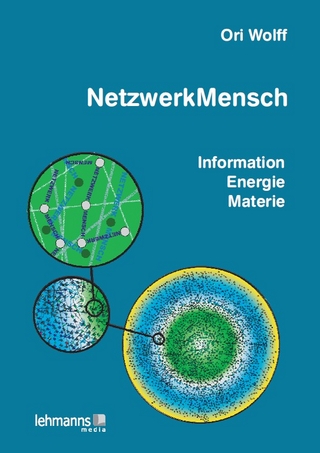
Food Aversion Learning
Kluwer Academic/Plenum Publishers (Verlag)
978-0-306-31040-9 (ISBN)
- Titel ist leider vergriffen;
keine Neuauflage - Artikel merken
1 Learning as a General Process with an Emphasis on Data from Feeding Experiments.- 1. Deficiencies of Traditional Learning Theories.- 1.1. Behaviorism.- 1.2. Tabula Rasa.- 1.3. Effects of the Falsity of Traditional Assumptions.- 2. Neoevolutionary Learning Theories.- 2.1. The Adaptive Complex.- 2.2. Are General Laws of Learning Unimportant?.- 2.3. Traditional Preconceptions in Neoevolutionary Theory.- 2.4. Evolutionary Principles and Prediction.- 3. Food Aversion Learning Governed by a General Process.- 3.1. Parametric Effects.- 3.2. Relative Cue Validities.- 3.3. Conditioned Inhibition.- 3.4. Sensory Preconditioning.- 3.5. The Delay Problem.- 3.6. Crossvalidation: General Processes Explain Another Anomaly.- 4. The Epistemic Part of the General Learning Process.- 4.1. Rationalization for a Lack of Precision.- 4.2. The Epistemic Process in Action.- 4.3. Speculations about Some Factors in Learning.- 4.4. Relevance Principles.- 4.5. The Integrative Action of the Concurrent Interference Principle.- 5. References.- Appendix to Chapter 1 Interference with Progress by the Scientific Establishment: Examples from Flavor Aversion Learning.- 1. Specific Criticisms.- 1.1. Pseudoconditioning.- 1.2. Temporal Contiguity.- 2. Type-2 Incompetence.- 2.1. Sociology of T2.- 2.2. How T2 Is Hidden.- 2.3. Society and T2.- 3. A Modest Proposal.- 4. References.- 2 Biological Significance of Food Aversion Learning.- 1. The "Learning-as-a-General-Process" Assumption.- 1.1. Evolutionary Specializations in Learning.- 1.2. Food Aversion Learning vs. Other Types of Learning.- 1.3. So What?.- 2. Are the Specialized Features of Food Aversion Learning Adaptive?.- 3. Does Our Understanding of Food Aversion Learning Have Implications Regarding the Mechanisms of Learning in Other Situations?.- 3.1. Possible Mechanisms of Long-Delay Learning.- 3.2. Learned Safety.- 3.3. Conclusions.- 4. References.- 3 Stimulus Characteristics in Food Aversion Learning.- 1. Sensory Modalities.- 1.1. Taste.- 1.2. Olfactory Stimuli.- 1.3. Visual-Auditory Stimuli.- 1.4. Somatosensory Stimuli.- 2. Parameters of Taste.- 2.1. Quantitative Considerations.- 2.2. Novelty.- 3. Species Differences.- 4. References.- 4 Gustatory Avoidance Conditioning by Drugs of Abuse: Relationships to General Issues in Research on Drug Dependence.- 1. Some General Issues.- 1.1. Effective Drugs.- 1.2. Toxicity and Effectiveness.- 1.3. Paradox or Not?.- 2. Studies of Mechanism: How Does the UCS Work?.- 2.1. Central Versus Peripheral Locus of Effect.- 2.2. A Nonspecific Mechanism: Novelty.- 2.3. The Importance of UCS Duration.- 3. An Area of Conflict: Interpreting the Effects of Prior Exposure to the UCS on Subsequent Conditioning.- 3.1. Prior Exposure to Morphine: The "Artificial Need" Hypothesis.- 3.2. The Tolerance Hypothesis.- 3.3. Habituation to Novelty.- 3.4. Associative Mechanisms.- 3.5. Conclusions.- 4. Summing Up.- 5. References.- 5 Suppression of Interspecific Aggression Using Toxic Reinforcers.- 1. Introduction.- 2. Muricide, the Mouse-Killing Response of Rats.- 2.1. Effects of Postkill Injections of Toxic Chemicals.- 2.2. Dissociation of Killing and Eating.- 2.3. Comparison with an Exteroceptive Reinforcer-Foot Shock.- 2.4. Summary and Implications.- 3. Some Species Differences: Suppression of Interspecific Aggression by Food Aversions in Predatory Species.- 3.1. The Relation between Killing and Eating in Organisms that Capture and Feed.- 3.2. Suppression of Predation in True Predators.- 3.3. A Two-Phase Hypothesis.- 3.4. The Origin of Species Differences.- 4. Conclusions.- 5. References.- 6 Koalas, Men, and Other Conditioned Gastronomes.- 1. Naturalistic and Anthropological Observations on Diet Selection.- 1.1. The Problem of the Infant Koala Bear.- 1.2. Historic Notes on Man's Feeding Habits.- 2. Experience and Taste Preference.- 2.1. Prenatal and Infant Influences.- 2.2. Neonatal Experience and Diet Selection.- 2.3. Dietary Selection and the "Medicine" Effect.- 3. Neural Structure and Feeding Function.- 3.1. Central Regulators and Gut Sensors.- 3.2. Palatability and Visceral Feedback.- 4. Summary: The Prototypical Gastronome.- 5. References.- 7 Physiological Mechanisms of Conditioned Food Aversion.- 1. Introduction.- 2. Functional Organization of CFA Circuits.- 2.1. CS and UCS Processing.- 2.2. Cortical Level.- 2.3. Subcortical Centers.- 3. ECS Studies.- 3.1. Short-Term Memory and Consolidation.- 3.2. Metrazol.- 3.3. Repeated ECS Treatment.- 4. Drug Effects.- 4.1. Drugs as UCS.- 4.2. Effects on CTA Acquisition.- 4.3. Effects on CTA Retrieval.- 4.4. Experiments with Intravascular Taste.- 5. Developmental Studies.- 6. Electrophysiological Analysis.- 6.1. Gustatory Control of Licking.- 6.2. EEG Correlates of CTA.- 6.3. Unit Activity Correlates of CTA.- 7. Conclusions.- 8. References.
| Zusatzinfo | 30 black & white illustrations, biography |
|---|---|
| Sprache | englisch |
| Themenwelt | Geisteswissenschaften ► Psychologie ► Klinische Psychologie |
| ISBN-10 | 0-306-31040-6 / 0306310406 |
| ISBN-13 | 978-0-306-31040-9 / 9780306310409 |
| Zustand | Neuware |
| Haben Sie eine Frage zum Produkt? |
aus dem Bereich


